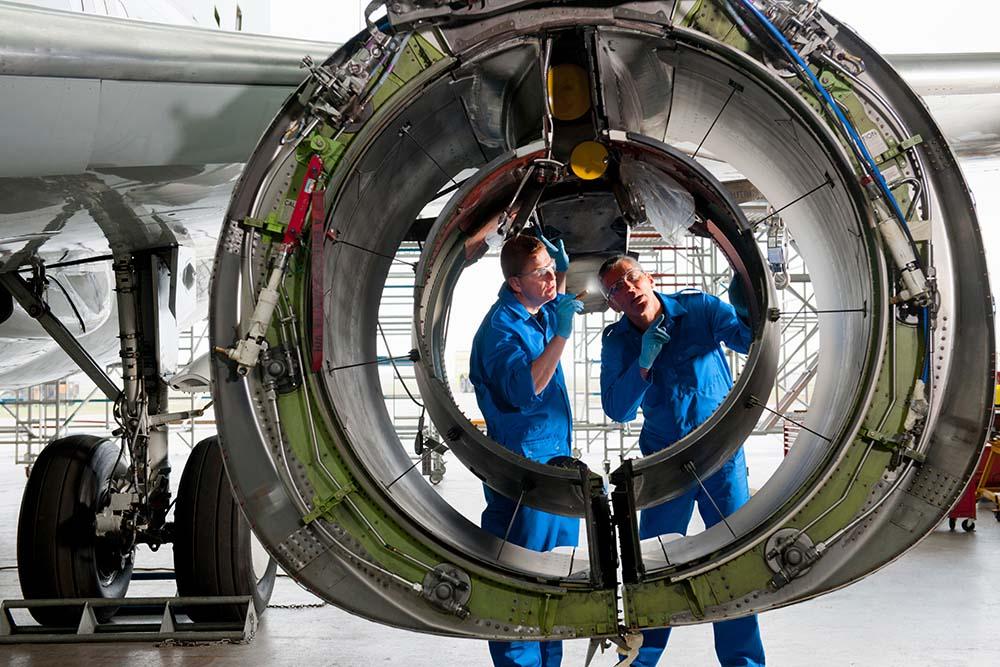
LAUNCH Technical Workforce Solutions, an aviation industry staffing provider that specializes in contract labor, has developed a new workforce pathway program aimed at solving the MRO industry’s shortage of qualified technicians. Its LAUNCH Academy program combines workforce training and support initiatives to help companies onboard new technicians, veterans transitioning to civilian workforce and qualified international workers.
One of the Academy’s main components is the LAUNCH Career Advancement Program (LCAP), which is designed to provide new technicians with the skills needed for success as they gain experience working at aircraft maintenance facilities. LAUNCH works with its clients to co-develop and co-sponsor computer-based and on-the-job training around needed skillsets, such as those required for avionics technician and structures mechanic roles.
Participants are assigned mentors that work with them to evaluate their progress over an initial 120-day period. If the participant achieves the expected milestones by the end of the period they are converted to a direct employee for the customer, but the program also provides opportunity for additional development over a 30-day extension period if they fall short.
“The program is designed to provide them with the basic skills and help them gain valuable experience at certain times throughout their assignment,” says Mike Reporto, president of staffing at LAUNCH. “The problem with contingent labor is that there’s really no progression. The employee starts an assignment, they’re expected to complete it, and then commonly we move them to a new opportunity, where, post-COVID, there’s an influx of requests to hire direct staff. Instead of hiring direct staff, which we do on a smaller basis, we designed LCAP, which allows the employee to come in and work toward achievable milestones throughout their assignment.”
In addition to partnering with clients on LCAP, LAUNCH has also formed alliances with educational institutions such as the Aviation Institute of Maintenance and the National Institute for Aviation Research. Through these partnerships, LAUNCH is developing on-the-job training for new graduates, supplemental courses for technicians wanting to grow their skillsets and curricula for military service members who are transitioning to civilian employment.
Reporto says booming MRO workforce demand in the U.S. is also driving a search for qualified talent from other countries. He notes that LAUNCH made more than 3,500 workforce placements in 2022 and it still has more than 3,500 open positions to fill. “Even though our numbers have trended in the right direction coming out of COVID-19, the demand continues to increase, so we need an answer beyond Working Heroes [its veteran-focused workforce program] and our partnerships with schools,” he says.
In this vein, the Academy also includes LAUNCH Global Access, a visa program where LAUNCH sponsors skilled mechanics from abroad to work in the U.S. Reporto says these mechanics have equivalent qualifications and reliability to those in the U.S. and they meet FAA requirements for reading, speaking and writing in English.
LAUNCH already has placed 50 technicians through the Global Access program and it has 150 technicians in process. For now, the program is focused on technicians from Canada and Mexico, but Reporto says LAUNCH is exploring additional visas to broaden its international capabilities.
Despite widespread demand for MRO workforce across the U.S., Reporto says LAUNCH plans to keep the Academy focused on specific regional centers so “customers aren’t competing for those resources.” He adds: “Our vision is to have regional partners so they can have a seat at the table and we can analyze their needs, go through their forecasts and see what their demand levels are.”
Reporto also stresses that partner companies will need to have leadership that is willing to think outside the box to solve the workforce shortage. “If we’re not creative, there’s never going to be a solution,” he says. “A lot of our customers are turning away work because of [the workforce shortage], but are not willing to entertain these strategic, creative discussions to implement these unique programs. Compared to the current contingent [employment] model, these are much longer-term solutions.”



